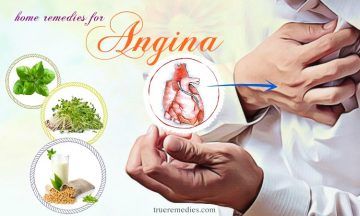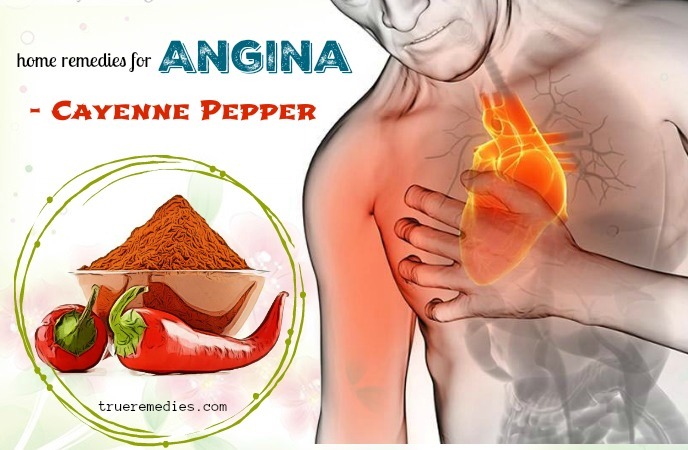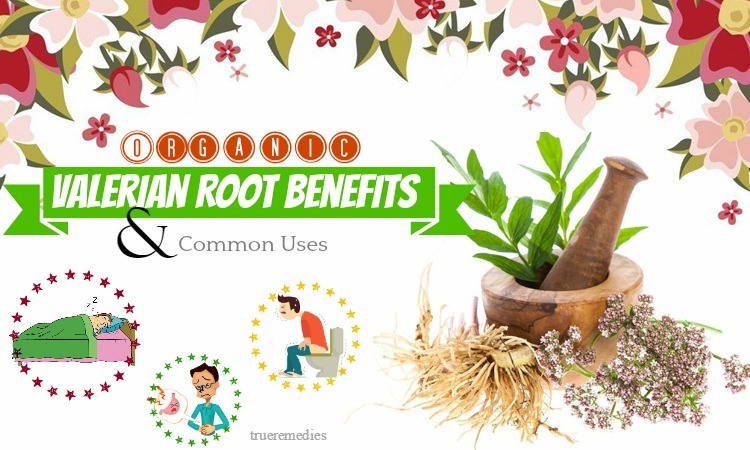Updated: 11/23/2019
Contents
Angina is a symptom or disease with the expression of pain in the middle of the chest. Anyone can have angina because of a variety of reasons. This symptom usually lasts only a few minutes, however, in some cases, it lasts for several hours. This makes the person feel very tired and uncomfortable.
Similar to other illnesses, having knowledge of angina will help you prevent as well as treat this disease most effectively. Just with this article, you can equip yourself with all that. Do not worry that you do not have much specialized medical knowledge. This knowledge below is presented in a very understandable way.
What Is Angina?
Angina is the most common disease in the developed world. It is a symptom or disease with the expression of pain in the middle of the chest. This chest pain is caused by coronary artery narrow because of obstruction or contraction. This causes the heart to not have enough blood to maintain its activities. At this point, the heart is lacking oxygen to pump blood. In other words, angina occurs when the oxygen requirement of the heart exceeds the supply ability of coronary arteries. When there is no need for increased blood flow, the angina symptoms also disappear. Angina usually occurs when you try to do something. This symptom can disappear when you have a rest. In severe cases, it may occur even when you use minimal strength or when you have a rest. At this time, angina is called unstable angina or acute coronary syndrome.
You may have angina when climbing stairs, carrying heavy loads, feeling angry, working in too hot or too cold weather, eating too much, having sex, etc. Although in the early stages, angina does not affect life, it causes the patient to be unable to continue the activities because of the pain and discomfort it causes. Doctors and specialists are always advised to treat this condition as soon as possible. It may be a sign of some other illness, especially the heart attack.
What Are Common Causes Of Angina?
Here are the common causes of angina:
TrueRemedies Partner Solutions

Need a Help from the Leading Expert Online, Available 24/7?
They’re all here and ready to answer your questions online or by phone. Keep asking questions until you get the answer you need.
- Coronary Heart Disease
Coronary heart disease is also known as coronary artery disease. It is believed to be one of the leading causes of death in the world. It is estimated that about 10 million people die each year because of this evil disease.
- Gastroesophageal Reflux Disease
Angina usually occurs in patients with gastroesophageal reflux disease (GERD). When the stomach is affected, it will affect the respiratory system. This chest pain is actually caused by pain in the esophagus through the chest. When acid in gastric juice is refluxed into the esophagus, acid stimulates the nerve endings on the surface of the esophagus, causing pain.
- Narrow Respiratory Tract
Angina is also one of the signs of narrowing of the respiratory tract. At this time, the patient feels their chest discomfort due to foreign objects falling into their airway.
- Psychological Factors
Patients with anxiety or nervous disorders may also have angina.In addition, people with anemia also suffer from angina because blood does not provide enough oxygen for the body.
- Dyslipidemia
Dyslipidemia is a disease that not only found in obese people but also in thin people. This is the main cause of myocardial infarction and causes shortness of breath. In addition, patients with liver failure and renal failure also have this symptom.
- Cigarette
Frequent smoking or exposure to cigarette smoke will destroy the arteries of the body, including the arteries leading to the heart, causing cholesterol plaques to build up and clog the blood stream.
- Diabetes
The body of a person with diabetes cannot produce enough insulin. Insulin is a hormone produced by the pancreas that helps the body to metabolize glucose into energy. In addition, diabetes also increases the risk of coronary heart disease, leading to angina and myocardial infarction, while increasing the risk of atherosclerosis and elevated cholesterol levels.
- Obesity
If you are overweight, your heart will have to work hard to provide blood to the tissues. Your lack of exercise will increase the risk of diseases like high blood pressure or diabetes. This indirectly leads to angina.
- Other Causes
Some other causes of this condition such as high age, high blood pressure, high triglyceride or high cholesterol levels, and genetic factors.
What Are Common Symptoms OfAngina?
Pain and discomfort are the initial symptoms of angina. The pain may start in the chest and sometimes spread to the back, neck, left shoulder and even down the arm (especially the left arm). Sometimes the patients may have symptoms like heartburn or indigestion. Angina may include symptoms such as sweating, nausea, fainting, exhaustion, dizziness, or difficulty breathing.
In addition, the symptoms of the disease depend on the type of angina that you have. There are 3 types of angina with their symptoms:
Stable Angina
- Occurs when the patient is over-exercised causing the heart to beat faster than normal.
- The pain is usually felt in advance and it takes place in a short time (about 5 minutes).
- Feeling of heartburn or indigestion.
- Chest pain can spread to the hands, back or other parts of the body.
Unstable Angina
- Pain usually occurs at midnight when you are sleeping or when you are resting.
- The pain often comes suddenly.
- The pain usually lasts up to 30 minutes.
- Over time, untreated pain will become more severe and may be a sign of cardiovascular disease.
Capillary Pain
- The pain is more severe. It can last longer than other angina pains.
- Usually accompanied by symptoms of shortness of breath, difficulty sleeping, and fatigue.
- The pain often occurs when you perform routine activities and when you feel stressed.
There may be other symptoms not mentioned. If you have any questions about the signs of the disease, please consult your doctor.
Who Is At High Risk Of This Disease?
Anyone can have angina for a variety of reasons. People who have or are experiencing cardiovascular problems will often have angina. Men over 45 and women over age of 55 are at higher risk of heart attack than teens. In addition, people with high blood pressure, dyslipidemia and obesity also have a higher risk of this disease than other subjects. The pathological condition may be different in many people. Always talk to your doctor about the best method for diagnosis and treatment.
When To See A Doctor?
Angina can appear weekly, monthly, or even yearly before the patient has a heart attack. If your chest pain lasts and does not stop even after you have a rest or take medication, it may be a sign of a heart attack. Please call your emergency immediately or go to the nearest hospital for direct examination and emergency treatment. In addition, after the use of home remedies for a long time without any effect, you should also see your doctor.
You probably have the most comprehensive view of angina after reading the above information. As we have stressed, the diagnosis and treatment of the disease should be implemented as soon as possible. Therefore, below, we present home remedies for angina treatment. Many people have successfully treated angina with these home remedies. Take a look at TrueRemedies.com!
Top 30 Home Remedies For Angina Symptoms
1. Garlic
Using garlic is the first treatment in this list of home remedies for angina. For thousands of years, the use of garlic not only narrowed in the kitchen space but also outreach in the prevention and treatment of some diseases.During World War II, British doctors used garlic as an antibiotic to treat wounds.Garlic has three active ingredients: allicin, liallyl sulfide and ajoene. Studies show that the essence of garlic works to strengthen the immune system, preserving the antioxidant in the body.Age, malnutrition and cigarette smoke all cause angina. They cause the aorta to harden. Regular garlic consumption slows the aging process of the aorta and helps them to become more active [1] [2].
Garlic is also a very good material for diabetes patients.Garlic is always mentioned as one of the good foods for diabetics. Regular consumption of garlic also helps prevent diabetes.This is because garlic contains many nutrients that regulate blood pressure, lower cholesterol and blood sugar levels. This is a good news for diabetics.When diabetes prevention or treatment is successful, you have eliminated one of the causes of angina.
To use garlic to treat angina, besides regularly using garlic as a condiment for the dish, you can eat about 2-3 cloves of raw garlic every day.This will help you prevent and treat other illnesses like flu and sore throat.In addition, you can use garlic to relieve symptoms of angina quickly by mixing 1 teaspoon of garlic juice with a cup of warm water to drink.The pain caused by this condition will quickly disappear.
Although garlic is good, patients with hepatitis, diarrhea or kidney disease should not consume garlic on a regular basis. The active ingredients in garlic will make their condition worse.
2. Ginger
This is the next one in this list of home remedies for angina. Many people have successfully treated angina by using ginger. The reason is because ginger has the ability to prevent and treat diabetes and some other diseases. Substances in ginger can help the body avoid inflammation and swelling due to increased blood sugar. Ginger also helps reduce the risk of cardiovascular disease and protect your heart from complications such as heart attacks or coronary heart disease. Few people know that ginger can lower cholesterol and prevent blood clots. Thanks to that ability, ginger can reduce the risk of blood vessel blockage and reduce the rate of stroke due to heart disease [3] [4].
Just like garlic, eating a few slices of ginger every day is what patients with angina should do. Eat ginger when your stomach is empty. In addition, a cup of warm ginger tea can help reduce the pain caused by angina. This does not take up much of your time, but the results it brings will surprise you.
The use of ginger also has some note. Although ginger is good in treating the symptoms of angina, patients should not abuse this remedy. Use ginger in moderation to get the best results.
In addition, patients with fever, hemorrhoids, liver disease, stomach pain and pregnant women should not consume ginger on a regular basis. Another thing that you need to pay attention is not to eat ginger or drink ginger tea in the evening because this is not good for your stomach.
3. Turmeric
Among home remedies for angina pain, using turmeric is one of the most effective. Turmeric is good for patients with diabetes and patients with certain blood disorders. Turmeric has the ability to reduce blood sugar and neutralize insulin, preventing diabetes. Therefore, turmeric is also referred to as one of the best foods to control diabetes. The curcumin in turmeric helps the body remove free radicals and reduce the damage to the cell membrane and DNA. Many scientific studies have shown that turmeric acts as a substance that helps cleanse the liver and improve blood circulation naturally. Therefore, turmeric can help you prevent and treat some diseases of the stomach and liver [5] [6].
Digestive disorders are a disease that any age can be at risk. It causes inconvenience in daily life. Curcumin, the yellow substance of turmeric, stimulates the liver to produce and excrete bile. This helps the body improve the digestion of fat, giving you a more healthy digestive system. Besides, some of the ingredients in turmeric will help break down fat in your daily diet, helping you prevent obesity – one of the causes of angina. Because of all these reasons, the use of turmeric to treat angina is always the advice of many doctors.
To use turmeric for the purpose above, add turmeric to everyday dishes as a spice. It will increase the flavor of the dish. In addition, you can take a cup of warm turmeric tea daily to improve your situation. The way to make this tea is very simple. You only need to mix 1 teaspoon of turmeric powder with a glass of water, then boil this mixture and drink when the tea is still warm. This does not take much time but brings a lot of great results. After a period of application, you will find your angina improved, your skin is also much smoother. You can also mix turmeric powder with a glass of warm milk for daily use to get the same effect.
Although turmeric is very good, pregnant women, people with iron deficiency, patients with kidney stones and patients taking anticoagulant should not apply this remedy.
4. Cayenne Pepper
Using Cayenne pepper is the next treatment in this list of home remedies for angina symptoms. Cayenne pepper is named for the city of Cayenne (France) – where this kind of chili is grown. Cayenne pepper is usually dried, crushed and used in powder form. It is usually used as a dry spice in dishes.In particular, Cayenne pepper powder is also known as a herbal medicine to help treat some common diseases. Cayenne pepper contains many nutrients such as Vitamin A, Vitamin C, flavonoids and carotenoids, which are all pigments that work to prevent oxidation. At the same time, the hot spicy character of this kind of chili is due to the active substance capsaicin. This substance has antibacterial propery and works to help relieve pain [7].
A study shows that Cayenne peppers help increase body temperature. It also reduces your appetite, while promoting your body to burn more calories. As a result, one of the causes of angina – obesity – is eliminated. Cayenne peppers are also good for patients with diabetes. With this chili powder, patients with diabetes need less insulin to reduce their blood sugar.In addition, cayenne pepper also helps the heart by removing plaque from the arteries, improving blood circulation and providing the nutrients needed by the heart. Undoubtedly, Cayenne pepper is actually what patients with angina need [8] [9].
To get the best results with this remedy, add the Cayenne pepper to the dish regularly. In addition, you can also mix 1 teaspoon of Cayenne pepper powder with a glass of milk or any fruit juice to reduce the pain caused by angina.
One thing to note is that breastfeeding women and people with allergies to Cayenne peppers should not apply this remedy.
5. Basil
This is one of the little-known home remedies for angina pain. Basil is a vegetable that is commonly used in everyday foods. Besides, basil also has many different healing uses. Basil contains high levels of antioxidants and essential oils that help the body produce substances such as eugenol, methy eugenol and caryphyllene. These are all substances that support normal beta cells of the pancreas (cells that store and release insulin). This improves insulin sensitivity and lowers blood sugar levels. Therefore, basil can reduce the symptoms of diabetes, including angina [10].
Not only good for blood sugar, basil is also very good for the heart. The antioxidant eugenol, which is abundant in basil, helps protect the heart by keeping blood pressure under control while also lowering cholesterol levels in the body. Due to its rich antioxidant properties, basil leaves are thought to help stop the development of diseases caused by smoking, including angina.
Basil has the use of anti-stress. A study conducted in India found that basil helps maintain normal levels of cortisol – the hormone that causes stress in the body. Basil leaves can soothe the nerves, regulate blood circulation and defeat free radicals – an important factor in stress. The anti-stress compounds of basil make it an ideal solution for those who want to quit smoking. Basil will soothe nerves, dispel stress – factors related to cigarette smoking. It also has the effect of cooling the throat similar to mint, which will help control cravingsfor cigarettes. As you know, stress and smoking are the causes of angina. Therefore, basil is a “savior” in your case.
The use of basil to treat angina is very simple. Chew 10-12 basil leaves when you are hungry every day, then you can get unexpected benefits. In addition, you can chew the basil when you have pain caused by angina. If you do not want to chew the basil leaves, let’s drink 1 cup of basil juice every day when your stomach is empty to get the same effect. You can add honey if you want.
It is important to note that pregnant women should not consume a lot of basil because basil can have negative effects on mother and child health.
6. Alfalfa
Alfalfa is considered one of the best natural home remedies for angina pain. Alfalfa has long been known as a precious medicine because it has many effective uses in beauty and health care. For decades, Western medicine has begun to pay attention to the healing of alfalfa [11] [12].
Scientists studied this herb and received positive results. Both the roots and leaves of alfalfa are useful. Alfalfa has the effect of increasing health. In addition, this herb helps to prevent anemia very effectively. It helps lower cholesterol levels and plaque buildup in the arteries, ensuring blood flow to the heart. Few people know that alfalfa leaves contain a very large amount of chlorophyll. This chlorophyll helps reduce the rate of angina.
The alfalfa is rich in saponins. Saponin is one of the common constituents of the herb, which is very beneficial for human health. Saponin is bound to bile salts and cholesterol in the intestinal tract. Bile salts form small micelles with cholesterol to facilitate its absorption. Saponin lowers blood cholesterol by preventing its re-absorption. Besides, saponin can fight the infection caused by the parasite. It also helps the immune system fight harmful bacteria. Saponins also act directly as an antioxidant, helping to reduce the risk of cancer and heart disease. Therefore, this is a remedy for angina that you should try at least once.
To use leaves for prevention or treatment of angina, drink 1-2 glasses of lukewarm alfalfa tea every day. The way to make this tea is very simple. All you need to do is mix 1-2 teaspoons dried alfalfa leaves with 1 cup of hot water, drink when the tea is still warm. Besides, you should also drink a glass of warm alfalfa tea every time the angina symptoms hurt you.
Note that patients with liver disease and pregnant women should not apply this remedy.
7. Fenugreek
The next one in this list of home remedies for angina symptoms is using fenugreek. Fenugreek is a popular herb commonly found in the Mediterranean region. However, due to its strong medicinal nature in medicine, fenugreek has become popular worldwide today.
Fenugreek helps eliminate angina by controlling diabetes. Fiber in fenugreek slows the absorption of carbohydrates and sugars of the body. In 2009, a study published in the International Journal evaluated the possibility of phenotypic hypoglycemia in patients with type 2 diabetes. This study found that 10 grams of turmeric seeds soaked in hot water could be helpful in controlling high blood sugar [13].
In addition, eating bread made from fenugreek powder can help reduce insulin resistance in patients with type 2 diabetes. This is really good news for people who suffer from angina due to diabetes.
As you know, high cholesterol levels are one of the causes of angina. Fenugreek is the solution to this problem because it works to lower cholesterol. It contains a large amount of soluble fiber, so it can inhibit the absorption of cholesterol and reduce the level of bad cholesterol like LDL in the body. Bad cholesterol can cause a blockage of the blood vessels leading to a heart attack or stroke. In addition, fenugreek also has antioxidant properties, which help improve cardiovascular health in general. It dilutes blood to prevent blood clots which can block blood flow to the heart, lungs and brain. In particular, fenugreek helps stabilize blood sugar and fight obesity – two major factors that increase the risk of angina. For all these reasons, the use of fenugreek for angina treatment is something you should do.
To get the great use of fenugreek, eat soaked fenugreek seeds daily. All you need to do is just soak 1 teaspoon of fenugreek seeds in water overnight. The next morning, eat them when you have not had breakfast. Also, to improve the situation quickly when angina is present, mix 1 teaspoon of fenugreek seeds with 1 cup of water, boil it for 5 minutes and then filter for water and drink. The pain will quickly be removed.
Note that people who are taking blood thinner medication should not use fenugreek to treat angina.
8. Almonds
This is one of the little-known home remedies for angina treatment. Eating almonds at a moderate level helps lower cholesterol, prevent heart disease and reduce weight. Almonds are an excellent source of vitamin E (25g almonds provide 70% of the body's daily vitamin E intake). They also contain large amounts of magnesium, potassium, zinc, fiber and iron. Besides, almonds are a healthy source of monounsaturated fats. They contain more calcium than any other nut. Therefore, they are an excellent source of food for vegetarians. Almonds also contain amygdalin (also known as laetrile or vitamin B17) which is an anti-cancer nutrient.
Almonds contain phytochemicals including beta-sisterol stigmasterol and campesterol. They are the ingredients that help you to have a healthy heart. They also have the ability to reduce the risk of heart disease by lowering LDL and cholesterol in the blood. Contains monounsaturated fats (an important fat found in the Mediterranean diet), almonds offer far greater benefits than simply lowering cholesterol [14].
For many years, almonds are considered nuts that can make you gain weight quickly. However, recent studies have shown that people who consume nuts tend to have lower body mass indexes. Although almonds are high in fat and calories, eating almonds at a moderate level can actually help you lose weight. As you know, obesity is one of the causes of angina. So why not try this remedy to improve this situation?
As we said above, eating almonds at a moderate level is very good. Therefore, eat about a handful of almond nuts each day. Follow this habit to get a healthy body. Besides, you can use almond oil to relieve pain. Whenever angina attacks, apply a little almond oil to your chest, the pain will quickly disappear.
Patients taking laxatives or antacids should be aware of the use of almonds. Eating almonds after about 1-2 hours after taking the medicine is the advice that the doctors give them. Eating too many almonds can make you more likely to have constipation. Therefore, please follow our guidelines for best results.
9. Omega-3 Fatty Acids
The next one in this list of home remedies for angina is Omega-3 fatty acids. Omega-3 fatty acids are essential fatty acids in the multifunctional polyunsaturated fats. Omega-3 fatty acids include Ecosapentaenoic acid (EPA) and Docosahexaenoic acid (DHA). Omega 3's EPA helps produce prostaglandin in the blood. Prostaglandins have the effect of inhibiting platelet aggregation, thereby reducing and preventing the formation of blood clots and bad cholesterol (especially triglycerides) in the blood. As a result, blood viscosity decreases, blood circulation is also improved.
Omega-3 fatty acids are essential because the body cannot synthesize them. We can only add them to the body through foods and functional foods. Omega-3 is helpful in lowering cholesterol and triglyceride levels in the blood, preventing blood clots (antithrombotic) and coronary thrombosis and helping to regulate the heart rate (antiarrhythmic). Therefore, this is a remedy for angina that you should try at least once.
Some typical Omega-3 fatty acids foods that we recommend regularly consume, such as types of seafood (especially salmon, mackerel, tuna, and shellfish), flaxseed oil, walnuts, eggs and chia seeds.
Omega-3 is a natural blood thinning agent. So, if you are taking aspirin or other anticoagulants or blood thinners, you should not increase the consumption of these foods.
10. Baking Soda
If you have angina, think of gargling with baking soda which is claimed to neutralize 70% of pathogenic bacteria, remove tonsils from the purulent accumulations, decrease pain and discomfort.
Baking soda is also known as sodium bicarbonate, which is a white non-toxic power with salty taste. This compound has the ability to treat a variety of conditions, from burns, heartburns, to acne, stomach issues, and back or chest pain, etc. You can add some baking soda to a cup of hot water, then drink this solution to release the acidity of your body, relieving chest pain naturally.
11. Brans
In order to remove cholesterol to reduce chest pain symptoms, your daily diet has to contain lots of fiber. Fortunately, bran cereal is plentiful of fiber, preventing and decreasing cholesterol from passing to your bloodstream through intestine. You just need to consume a cup of full bran cereal daily morning to get rid of chest pain.
12. Legumes And Baked Beans
One of must-try home remedies for angina is legumes or baked beans. They can support cardiovascular problems and other chest-related issues [15]. Thanks to the high content of manganese as well as folate – two important substances for heart health, these ingredients can relieve angina symptoms if consumed at least 5 times per week.
13. Snake Gourd
This is a common herb which is potent for some maladies. Due to the rich source of minerals like iron, calcium, magnesium, oxalic acid, sodium,… snake gourd is versatile in terms of treating conditions. The leaves, roots and fruit pulp of this ingredient are usually used to deal with chest pain [16].
14. Soy
Being a powerhouse of proteins, calcium, dietary fiber and having low fat content, soy is one of little-known home remedies for angina. It is a great alternative for high-fat dairy products such as cheese. The proteins help to improve blood vessel system, thereby treating angina. According to some studies, it was shown that soy products can decrease the risk of cardiovascular diseases, including angina [17]. Besides, soy lecithin, which is an extract of soy oil is rich in choline, so it could help decrease cholesterol level and reduce angina pectoris. Therefore, you had better include soy to your daily diet.
15. Green Tea
This is a rich source of carbohydrate, vitamins and minerals and antioxidants [18]. Green tea offers a number of benefits, including regulating blood pressure, decreasing pressure on artery walls, and preventing platelets from sticking [19]. As a result, it accelerates blood flow within your body, thereby decreasing chest pain because of lack of oxygen-rich blood.
To get the best results, you are recommended to drink 3-4 cups of green tea every day. Take a cup of boiled water to dip tea bag into it. Allow it to steep for a few minutes before drinking.
16. Indian Gooseberry
This 16 is a great source of vitamin B, C, iron, phosphorus, and antioxidants [20]. Thanks to these compounds, you can use Indian Gooseberry for some heart illnesses [21]. Also, Indian gooseberry also helps to maintain proper cholesterol level within the body, prevent the buildup of plaque – one of primary reasons for chest pain and angina.
You can take advantage of Indian gooseberry in the form of juice, powder, or raw.
17. Celery And Carrot Juice
Carrots have a rich content of vitamin A and beta-carotene, helping to boost the immunity and decrease cholesterol levels [22]. Carrots and celery are also plentiful of potassium and iron. Thus, it is a wonderful detox concoction that purifies your blood. Also, it strengthens the heart muscles as well as arterial valves and alkalizes blood stream.
You can prepare the fresh juice of carrot or celery to take their advantage.
18. Grapes
Another natural home treatment among home remedies for angina is grapes, which is a rich source of vitamin C and has strong antioxidants. It can decrease inflammation, boost blood flow, and improve heart health. Thus, it can cure and prevent angina.
You can eat grapes or take advantage of grape seed extract to lower the risk of heart diseases, including angina [23].
19. Grapefruit
Grapefruits are not grapes, but they are all good cures for angina. Grapefruits are rich in magnesium, which is an important mineral for angina [24]. You had better consume this fruit every day. However, be careful if you are taking any kind of tablet for cardiovascular issues [25].
20. Oregano Oil
Among home remedies for angina, oregano oil is lesser-known but works well. This oil contains antifungal and antibacterial properties, so it helps to take control of respiratory issues [26] and decrease chest pain. If the reason of your chest pain is respiratory problems, then oregano oil is your solution. It has carvacrol, flavonoids, rosmarinic acid, terpenes, and acts as anti-histamines and decongestants. Therefore, oregano oil can decrease chest pain due to respiratory tract infections. The anti-histamines in oregano oil can prevent plaque buildup in arteries, which is a result of chest pain, not to mention the ability of preventing cold and coughs that cause chest pain.
You can take oregano oil in a few ways for angina treatment:
- You can inhale oregano oil’s scent before your bedtime to get rid of chest pain.
- Combine 10-12 drops of oregano oil with any essential oil such as jojoba oil, then massage it onto your chest area.
- Mix 2-3 drops of oregano oil with a cup of water, have it once per day.
21. Tomato
Tomatoes is rich in vitamin A, C, E, lycopene, beta-carotene, folic acid, and so on [27]. They are good for heart health by reducing the risk of heart strokes, deoxidizing LDL – the “bad” cholesterol. Therefore, you should consume tomatoes daily to prevent and treat angina pain.
22. Pomegranate Juice
Pomegranate juice is beneficial for cardiovascular diseases, including angina. It can reduce oxidative stress and prevent the arteries from being damaged. At the same time, this fruit can help with synthesis of nitric oxide and prevent LDL from ruining your heart. Drink pomegranate juice to clear fatty acid deposits, thereby opening up your arteries. Pomegranate juice is supposed to have equal effects on both females and males and could relieve chest pain.
23. Apple Cider Vinegar
With amazing properties, apple cider vinegar can actively kill of the bacterial responsible for mucus production in chest, thereby relieving chest pain. Also, apple cider vinegar can ease breathing, decrease chest pain caused by acid reflux. The acetic acid of vinegar can decrease stomach acidity, maintains pH level within your body, thereby limiting the risk of chest pain in the years to come.
24. Licorice Root
Generally used to prepare Ayurvedic medicine, licorice root can help with diarrhea and stomach issues and chest pain. Some people take licorice by mouth for bronchitis, sore throat, cough, and some infections caused by viruses and bacteria. This herb is rich in flavonoids, helping to flush your body from toxins and open up the arteries for appropriate blood flow [28] [29].
Make licorice root tea by adding licorice root powder in boiling water, let it steep for a few minutes before straining. Sip it slowly. To sweeten it, add some honey. It is best to drink 1-2 cups of this tea every day.
25. Peanut Butter
You will find a rich content of monounsaturated fats in peanut butter, which helps to decrease LDL – the “bad” cholesterol – in the blood and improve good HDL – the “good” cholesterol” – in your body. Also, it assists in maintaining blood vessel and heart health.
Take 1 tablespoon of unsalted and fat-free peanut butter no less than 5 times per week to reap its benefits. In case peanut butter is unavailable or if you are not a fan of it, then take 2 tablespoons of peanuts every day as an alternative.
26. Ginkgo Biloba
Gingko biloba can boost the supply of oxygen-rich blood. It is a powerhouse of antioxidants, so it helps to eradicate free radical damages. This herb is helpful for not only angina but also cardiovascular problems [30] [31]. You could consume 80 mg of gingko Biloba for 3 times per day to harness its benefits.
27. Sprirulina
This is a cardio prective agent which can prevent and decrease the deposite of low-density lipids because of the availability of gamma linoleic acid (GLA). There are 18 proteins presenting in this small ingredient, which are a rich source of vitamin B12, E, zinc, manganese, copper and so on [32]. It can control the cholesterol levels, so helping to treat some heart diseases. Consume it as a supplement with the supervision of your doctor.
28. Artichoke
This is a good solution for heart diseases, including angina. It is thanks to its glycemic and lipidic-reducing actions [33]. It assists in reducing blood pressure as well as cholesterol levels. Furthermore, this herb can control some diseases which result in angina.
Infuse 2 tablespoons of dried artichoke leaves in about 1 liter of water. Have this drink 3 times per day before having meals.
Besides, you can also mix green artichoke leaves with wine if the dried leaves are unavailable.
29. Parsley
It is one of the best home remedies for angina pain along with other cardiovascular diseases [34]. You could consume fresh parsley leaves or as a natural herb. Make a tea from fresh parsley leaves by adding ¼ cup of its leaves to 1 cup of boiling water. After 10 minutes of steeping, strain it. Then, drink this tea 1-2 times per day for optimal results.
30. Yoga Poses
People who feel an ache in their chest area may not necessarily suffer from cardiovascular disease. It could be, of course. When the human heart does not get adequate oxygen, it will increase the risk of chest pain, also called angina. In such case, you can practice some yoga poses to relieve angina pain. Yoga helps to reduce chest tightness by opening, expanding and stretching the human chest. Also, it assists in improving your motion range, stretching pectoral muscles, and boosting flexibility, which help to eliminate chest pain.
Some of the most recommended yoga poses of chest pain relief are:
Matsyasana
This pose is also called as fish pose which is a beginner level of Hatha yoga asana. You are advised to practice this pose in the morning before having a breakfast to have best results. Or, it may be good to take a rest of several hours between the exercise and your last meal. This will help you have enough time to digest foods well. However, after all, this exercise should be practice in the morning. By practicing this yoga pose, you will stretch your chest as well as neck areas, relese shoulder and neck tension, alleviate respiratory problems, tone the parathyroid, pineal glands and pituitary, and stretch and tone your back.
Lie on your back, legs together and hands placed on sides
Place the palms down and under the hips
Bring your elbows close to one another and place them close to the waist
Cross legs with legs cross one another at the middle of your body
Maintain your knees and thighs flat on the ground
Breathe in, raise your chest up with head lifted and crown touching the ground
Move all of your weight on your elbows so that you feel lightly pressure on shoulder blades
Keep this position till you can bear with normal breath
Exhale, then release this position, lift your head and drop your chest to the ground
Untangle the legs before relaxing
Do this exercise from 30 to 60 seconds
Ustrasana
This pose also has another named as Camel Pose. It resembles a camel’s stance. It is recommended to practice in the morning before having a breakfast. Ustrasana helps to stretch and strengthen the back as well as shoulder. Also, it opens the chest while improving respiration. Practicing this pose will help tone your neck while stretching your throat.
Steps to take:
Kneel on the floor with hands on hips
Maintain your knees in lined with the shoulders and foot soles face the roof
Then, inhale and draw the tailbone in towards the pubis so that you feel a pull at the navel
Whilst doing so, arch the backs
Slide the palms over the feet, straighten the arms
Try to keep your neck in a neutral pose for 30-60 seconds prior to releasing
You had better avoid this yoga pose in case of having a neck or back injury. If you have low or high blood pressure, insomnia, or migraines, then do not do this asana.
Bhujangasana (Cobra Pose)
This is also called as Cobra pose which is a beginner level Ashtanga yoga asana. Similar to the first pose, you should also practice this pose in the morning before eating anything.
This exercise will stretch your chest and shoulder muscles, increase your flexibility and boost your mood. Also, it improves your oxygen and blood circulation.
What you have to do:
Lie flat with stomach down, hands on sides and toes touching one another
Move the hands to your front side, placed at shoulder level and palms down on the floor
Place all of your body weight on palms, inhale, raise the trunk and head with your arms bent at the elbows
Arch the neck backward so that it replicates the cobra with raised hood.
Keep the shoulders away from the ears and shoulder blades firm
Press the thighs, hips and feet to the ground
Keep this position for 15-30 seconds whilst breathing
Bring the hands back to your sides, your head rested with forehead contacting with the ground. Place hands under the head and rest your head slowly on one of your side. Breathe
With this pose, you will feel stomach pressed against the ground. You should avoid practicing it if you are suffering from hernia, headaches, pregnancy, back injuries, carpal tunnel syndrome, and abdominal surgeries.
Dhanurasana
Also called as bow pose, this exercise is a beginner level of Vinyasa yoga asana. It should be also practiced in the morning before eating anything. This pose is one of the 3 major back stretching exercises. It massages your heart, treats your asthma, and relieves fatigue and stress while opening up your chest, shoulders and neck.
All you have to do is:
Lie flat with stomach down on the floor, feet hip-width apart and arms on your sides
Fold the knees and keep your ankles gently
After inhaling, lift the chest and legs off the floor, legs pulled back
Look straight and smile
Keep this pose while focusing on your breath
After 15-20 seconds, exhale and release this pose
Avoid this exercise if you are suffering from headaches, hernia, lower back pain, neck injuries, low or high blood pressure, and abdominal surgeries. Pregnant women should avoid this exercise also.
Chakrasana
The last but not least effective yoga pose for angina relief is called wheel pose. This pose requires practitioners perform the shape like a wheel. Practicing this pose will be good for your heart, cure your asthma, stretch your lungs, and boost your thyroid. It also helps with depression and relieves tension and stress in the human body.
All you have to do is:
Lie on the floor with your back down with hip-width apart
Bend the knees so that foot soles are on the mat and closer to the buttocks
Hands placed behind the shoulders, fingers opened up and directed towards the shoulders
Balance the weight on the limbs, press your palms and feet while lifting your body off the floor
Allow your head to hang lightly and keep your neck long
Take deep, slow breaths and keep this position for about 1 minute until you can’t stand
Release this pose by bending the legs and arms
Lower your back gently on the mat and lie down for several minutes
This pose should be avoided if you have carpal tunnel syndrome, tendonitis, lower back pain, high blood pressure, headaches or shoulder impingement.
Bitilasana
Aka cow pose, Bitilasana is similar to the exercises above in terms of exercising conditions. It improves your balance and posture, strengthens your neck, stretches your back, calms your mind and relieves stress. Besides, it boosts blood circulation within your body.
Start with knees placed under the hips, wrists are lined with your shoulders
Keep your head hang in a neutral position, gaze softly at the ground
After inhaling, life the buttocks upwards when you open the chest. Allow your stomach sink towards the floor. Lift the head while looking towards the ceiling
Keep this position for several seconds, breathe out and return to the initial position
Do this exercise for 5-6 times
Note: People with neck injury should consult their doctor before practicing this exercise.
Natarajasana
Natarajasana is also called as Dance pose which stretches the neck muscles while strengthening the chest. Practicing it will help you improve your flexibility and boost the balance of your body. You should practice it before having a breakfast.
Take the steps below:
Stand in the pose of Tadasana
Breathe in while lifting the left foot with the heel placed towards the left buttock and knees bent
Put your whole body weight on the right foot
Push the ball of your right thigh bone into your hip joint
After that, pull your kneecap up in order to keep your standing leg straight and strong
With torso upright, use your left hand to grasp your left foot from the outside. Do not compress your lower back. Let your pubis lifted towards the navel while pressing the tailbone to the ground
Start to raise the left foot up and away from your torso, your back and the floor as well
Extend your left thigh behind your back and parallel to the ground with the right arm stretched forwards
Keep this position for 15-30 seconds before releasing
Repeat on your other side
Note: Do not practice this exercise if you have low blood pressure.
Some Attention
Here are some things to keep in mind during the course of treatment:
- Reduce stress – one of the causes of angina. You can join a yoga or meditation class to improve the situation.
- If your condition is due to obesity, let’s exercise and establish a proper diet to lose weight.
- Limit alcohol, beer and cigarettes.
- Eat slowly, do not eat and work at the same time.
- Use vegetable oils for cooking such as coconut oil and olive oil.
- Limit strong sports and strenuous activities.
Above are home remedies for angina treatment. These are all very simple and effective ways. They are all tested ways, so you can fully trust their safety. Let’s get rid of the symptoms of angina by applying them today. If you have any contributing ideas about our article of “Top 30 Natural Home Remedies For Angina Symptoms (Chest Pain)” introduced in Home Remedies Category, do not hesitate to drop your words below this post. We will answer as soon as we could.















